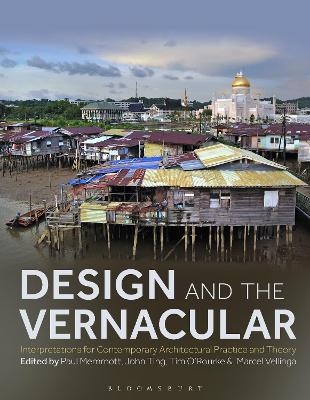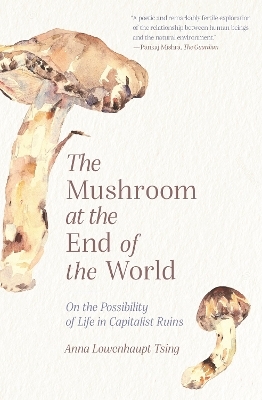
Design and the Vernacular
Bloomsbury Visual Arts (Verlag)
978-1-350-29431-8 (ISBN)
- Noch nicht erschienen (ca. Februar 2025)
- Versandkostenfrei innerhalb Deutschlands
- Auch auf Rechnung
- Verfügbarkeit in der Filiale vor Ort prüfen
- Artikel merken
How have Indigenous building traditions shaped modern building practices?
What can the study of vernacular architecture contribute to debates about sustainable development?
How has vernacular architecture been used to argue for postcolonial modernisation – and what has been the effect on heritage and conservation?
Design and the Vernacular explores how the vernacular architecture of Australasia and Oceania intersects with modernity and globalization – challenging assumptions about vernacular architecture being anachronistic and static, and instead demonstrating how it can shape contemporary architecture, nation building and cultural identities.
Sixteen chapters by architects, designers, and theorists, including Indigenous writers, explore different facets of vernacular architecture amid the context of rapid political, economic, technological, social and environmental changes. The result offers valuable lessons and case studies for architects across the globe, and for anyone interested in how the vernacular can inform contemporary urban planning and architectural design.
Paul Memmott is a trans-disciplinary researcher (architect/anthropologist) and the Director of the Aboriginal Environments Research Centre (AERC) and the Indigenous Design Place (IDP) at the University of Queensland, Australia. John Ting is an architect, researcher and educator. He teaches in the architecture program at the University of Canberra, Australia. Tim O’Rourke is Health Safety and Wellness Chair and Senior Lecturer in Architecture at the University of Queensland, Australia. Marcel Vellinga is Professor of Anthropology of Architecture at Oxford Brookes University, UK.
List of Contributors
Introduction, Paul Memmott and Marcel Vellinga
Part 1: Design Practice and Research Methods in Applying the Vernacular to Contemporary Contexts
1. The Architectural Vernacularisation of Pacific Aid Practice - Charmaine ‘Ilaiu Talei, University of Auckland, New Zealand
2. Te Whakapapa o nga Wharenui: A Genealogy of Maori Meeting Houses - Savannah Brown (Ngati Whatua ki Kaipara, Ngapuhi, Ngati Hine, Ngati Wai), Amber Ruckes (Tuhoe), Faye Mendes-Underwood (Ngapuhi, Te Rarawa), Aisea Fanamanu, Deidre Brown (Ngapuhi, Ngati Kahu) and Jason Ingham, all Waipapa Taumata Rau/University of Auckland, Aotearoa/New Zealand
3. ‘Tropical Architecture’: Cultural Collisions and Reverberations in the Vernacular of Aotearoa New Zealand - Jacqueline McIntosh and Bruno Marques, Victoria University of Wellington, New Zealand
4. Linguistics and Architecture, Creolistics and History, or, is Norfolk Island Architecture (a) Creole? - Joshua Nash, founding editor of Some Islands
Part 2: Bridging between Local Cultures and Influences of Modernity
5. Is Vernacular the New Modern? Reflections on Movements, Changes and Preservation in Indonesia - Gabriele Weichart, University of Vienna, Austria
6. Adaptive Uses of Traditional Windbreaks and Bough Shades for Indigenous Housing in Australia - Timothy O’Rourke, University of Queensland, Australia
7. Building on Indigenous Homelands in Arnhem Land since the 1980s: Harnessing Appropriate Technologies and Partnerships as a New Procurement Vernacular - Hannah Robertson, University of Melbourne, Australia
8. The Resurgence of Indigenous Knowledge in Adapting Vernaculars: Implications of Climate Change for Rimajol Architectural Traditions - James Miller, Western Washington University, USA
9. Papua New Guinea’s Vernacular Architecture, from Relics to Reframing Culture: Kunguma and Tubusereia - R. H. Rusch, J. H. N. Amar and L. A. Armitage, all Bond University, Australia
Part 3: Bridging for Diasporic Peoples
10. Archipelagic Views: Vernacular Transformation and Inter-Colonial Agricultural Trade Networks in the Late 19th Century Asia Pacific - Amanda Achmadi, Karen Burns, and Paul Walker, all University of Melbourne, Australia
11. Hand in Hand with Crossed Top Plates: Mapping the Contribution of Chinese Carpenters to the Production and Installation of Melbourne’s Prefabricated ‘Singapore Cottages’ - John Ting, University of Canberra, Australia
12. Diasporic Vernaculars? Different Australian Commercial Precincts - David Beynon, University of Tasmania, Australia and Ian Woodcock, University of Sydney, Australia
13. Translating Spaces: Speculative Landscape Futures for New Climate Diasporas - Lizzie Yarina, Massachusetts Institute of Technology, USA, and Penny Allan and Martin Bryant, both University of Technology Sydney, Australia
Part 4: The Vernacular in Postcolonial Modernisation, Politication and Nation-Building
14. Historic Church Vernacular in the Cook Islands: Modernization, Conservation and Change - Carolyn Hill, University of Waikato, New Zealand
15. Appropriating the Native: Shifting Definitions of the Vernacular in Twentieth-Century Philippine Architecture - Edson G. Cabalfin, Tulane University, USA
16. From Cultural Symbol to Societal Sign: The Question of the Kanak Traditional House in Present-Day New Caledonia - Louis Lagarde, University of New Caledonia, New Caledonia and Yves-Béalo Gony, IANCP, New Caledonia
Index
| Erscheinungsdatum | 07.11.2023 |
|---|---|
| Zusatzinfo | 65 bw illus |
| Verlagsort | London |
| Sprache | englisch |
| Maße | 189 x 246 mm |
| Themenwelt | Sozialwissenschaften ► Ethnologie |
| Sozialwissenschaften ► Soziologie | |
| Technik ► Architektur | |
| ISBN-10 | 1-350-29431-4 / 1350294314 |
| ISBN-13 | 978-1-350-29431-8 / 9781350294318 |
| Zustand | Neuware |
| Haben Sie eine Frage zum Produkt? |
aus dem Bereich


